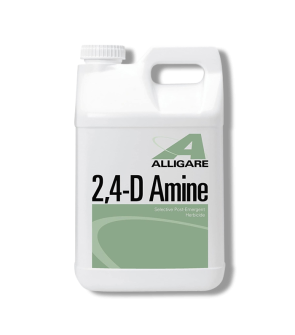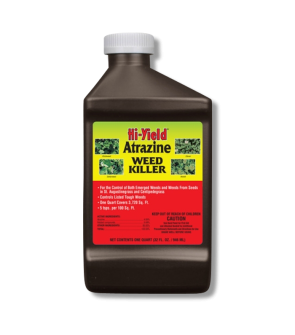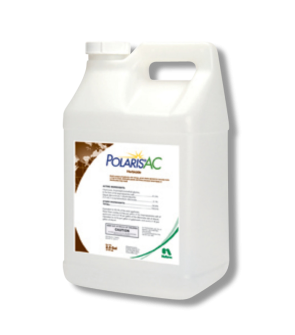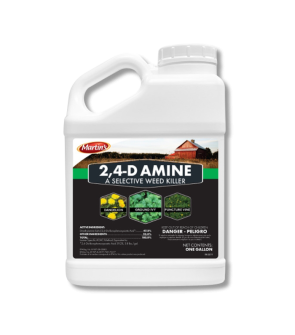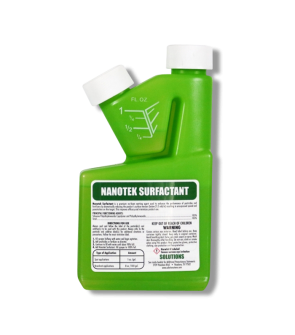Clover Control
Most Effective Products
Clover Control: How To Get Rid of Clover
Clover is one of the most recognizable broadleaf weeds on lawns and turf. Clover is a perennial weed that grows low to the ground and is very persistent where established.
Even though it is a weed, clover is actually a helpful addition to your lawn as it contains certain characteristics (like nitrogen) that keep your lawn healthy. If you're keeping a nice uniform lawn, you may hate the sight of it and want it gone.
Clover weed prefers nutrient-rich, moist soils. Dry and shady sites are not ideal conditions for growth. The notable characteristic of clover are its three-leaves which are rounded. There are many different species of clover and they can produce heads or dense spikes of small red, purple, white, or yellow flowers.
If you have Clover on your lawn that you want to get rid of, our DIY guide can help. The guide below has been put together by lawn care experts and will show you what the best clover killers are to use to properly conduct clover treatment so this plant no longer dominates your yard.
Identification

It is common to misidentify Clover for other broadleaf weeds, like dollarweed. The good news is that it is easy to spot clover when you know what to look for. Below we will share traits to help you to identify clover properly.
- Clover stems consist of three small leaves (or leaflets) that are petal-shaped and have a white "v" or crescent on each leaf, and are about half an inch long.
- There are several different common species of Clover with perhaps the most common being White Clover. Other common Clover species that grow in larger spaces include Red Clover which can grow up to 20 inches and has narrow leaves, or Sweet Clover which grows tall stalks of white or yellow flowers.
- White clover can grow in patches as tall as 8 inches and has three or 4 round leaves.
- White Clover produces small flowerheads that can be either white or light pink. The small blooms create a spherical cluster that looks like a small ball of white petals.
Use the description above and the images to help you to identify clover is on your lawn. If you are having trouble, contact us and we will assist you in properly identifying your lawn weed and offer suggestions.
Inspection

Once you have confirmed that you are dealing with Clover, you can then move on to inspection. During this phase, you will pinpoint the areas where Clover is growing and observe the conducive conditions helping Clover to thrive. This will help you in determining where to focus your treatment applications.
Where to Inspect
Clover often pops up in lawns that are under-fertilized or not fertilizer properly. The weed is a big absorber of nitrogen and if you have a lawn that is low in nitrogen, it is basically an invitation for clover to take over. Testing your soil is important to see what your turf soil is lacking so you can properly feed it and make your lawn nutrient-rich so clover cannot compete.
What To Look For
Clover is easy to spot on a lawn and usually blooms between early spring or late in the fall. Be on the lookout for their broad leaves and white flowerheads. This perennial broadleaf weed and is also found growing in fields, ditches, and other low-maintenance areas. Clover grows low to the ground and has a shallow root system.
Treatment
Before handling any chemicals, make sure you have on the right PPE for safety (glasses, gloves, mask). Timing is crucial when treating for clover. It's important to attack the clover when it has finished blooming because that is when the plant is the most susceptible to herbicide applications.
Step 1: Measure and Mix 2,4-D Amine Selective Post-Emergent Herbicide

Begin by calculating the square footage (length x width = square footage) of the treatment area to determine how much 2,4-D Amine Selective Post-Emergent Herbicide you will need. One gallon of this product can treat between 2 to 4 acres of land.
For pastures and rangelands, do not apply more than 8 pints (4 lbs.) per acre per year. For ornamental turfs, it is limited to 2 applications per year with a maximum of 3.16 pints of product per acre per application. The application rates will vary for the area being treated. Refer to the label for specific application rates. For small spot treatments use between 0.72 to 1.1 fl. oz. per 1,000 square feet in a gallon of water.
After finding the square footage of the treatment area, add the appropriate amount of 2,4-D Amine Selective Post-Emergent Herbicide in a pump sprayer or hose-end sprayer then mixed with the measured amount of water.
2,4-D will target broadleaf weeds, leaving most other grasses unharmed but some southern grasses like St. Augustine are more susceptible to injury so doublecheck the label to make sure your turfgrass won't be affected.
Noticeable results may take 1 to 3 weeks for the product to reach its maximum effects depending on the broadleaf weed variety and environmental conditions.
Step 2: Apply Herbicide to the Clover

Lightly spray the 2,4-D Amine Selective Post-Emergent Herbicide mixture where the Clover is established, spraying just on the top of the leaf surface, being careful of wind drift. Use a super fine mist with a handheld sprayer on a fan nozzle setting to get an even coating and thus, better control. The best time to spray is in the early spring. Spray the weeds to wet but not to the point of runoff.
Repeated application may be necessary about 6 weeks later to treat clover since it is a persistent weed. Clover should for sure die out soon thereafter if it hasn't already.
Prevention

To keep Clover from coming back, a pre-emergent may be a good preventative measure especially if the problem is an annual occurrence. Pre-emergent with the active ingredient Isoxaben has shown to be effective against Clover so we suggest Isoxaben 75 WG. It's also one of our cheaper pre-emergent for Clover.
To control White Clover, mix the Isoxaben 75 WG in a handpump sprayer at a rate of 0.25 oz. per 1,000 sq. ft. To control Yellow Sweetclover use 0.38 oz. per 1,000 sq. ft. Broadcast the solution over your turf area, making sure to use a fan spray setting to evenly treat the area.
Aside from this, Clover can be prevented from proper fertilization and mowing.
- Maintain a good fertilization schedule for your lawn so your lawn is getting adequate nitrogen in the soil
- Mow your lawn at the proper height of 3 to 4 inches in height. Taller grass blades will ensure less sunlight reaches any clover sprouts and promote stronger root growth.
Key Takeaways
What is Clover?
- Clover is a persistent weed that is a very common invader of lawns and has a distinct appearance with its three petal shape leaves which make it stand out.
- The most common Clover species that appear on residential lawns is White Clover, but there are other species such as Sweet Clover and Red Clover that can also appear in certain areas.
How To Get Rid of Clover
- Clover is controlled best by TopShot Herbicide because it is selective and won't harm your desired turf. Apply TopShot along with a surfactant like Alligare 90 Wetting Agent for best results.
- Alternatively to treat red and sweet Clover in particular, use 2,4-D Amine Selective weed killer.
Preventing Clover Reinfestation
- Prevent Clover with a pre-emergent application of Isoxaben WG and maintaining a fertilization schedule to promote a thick dense healthy yard of grass.

